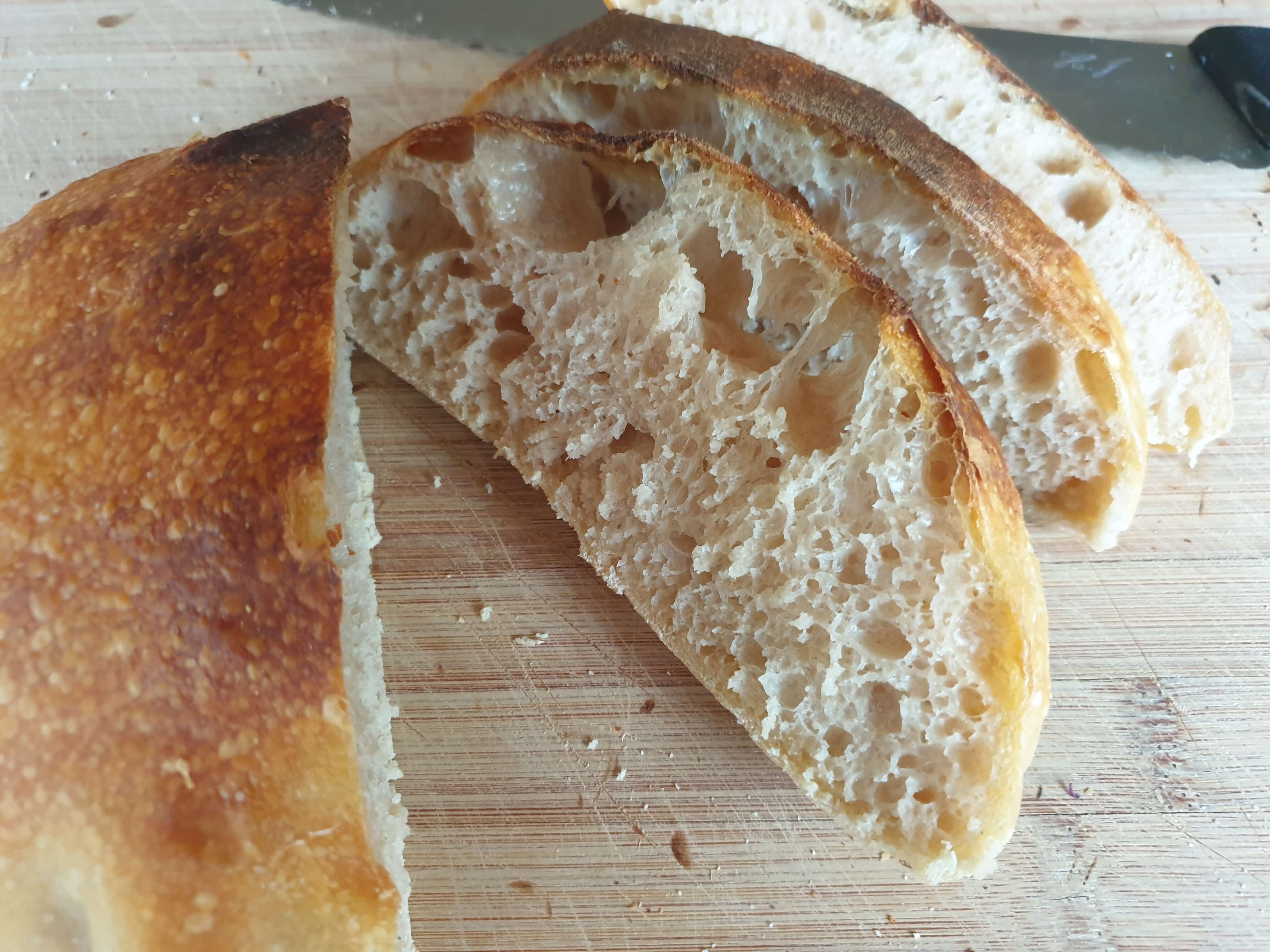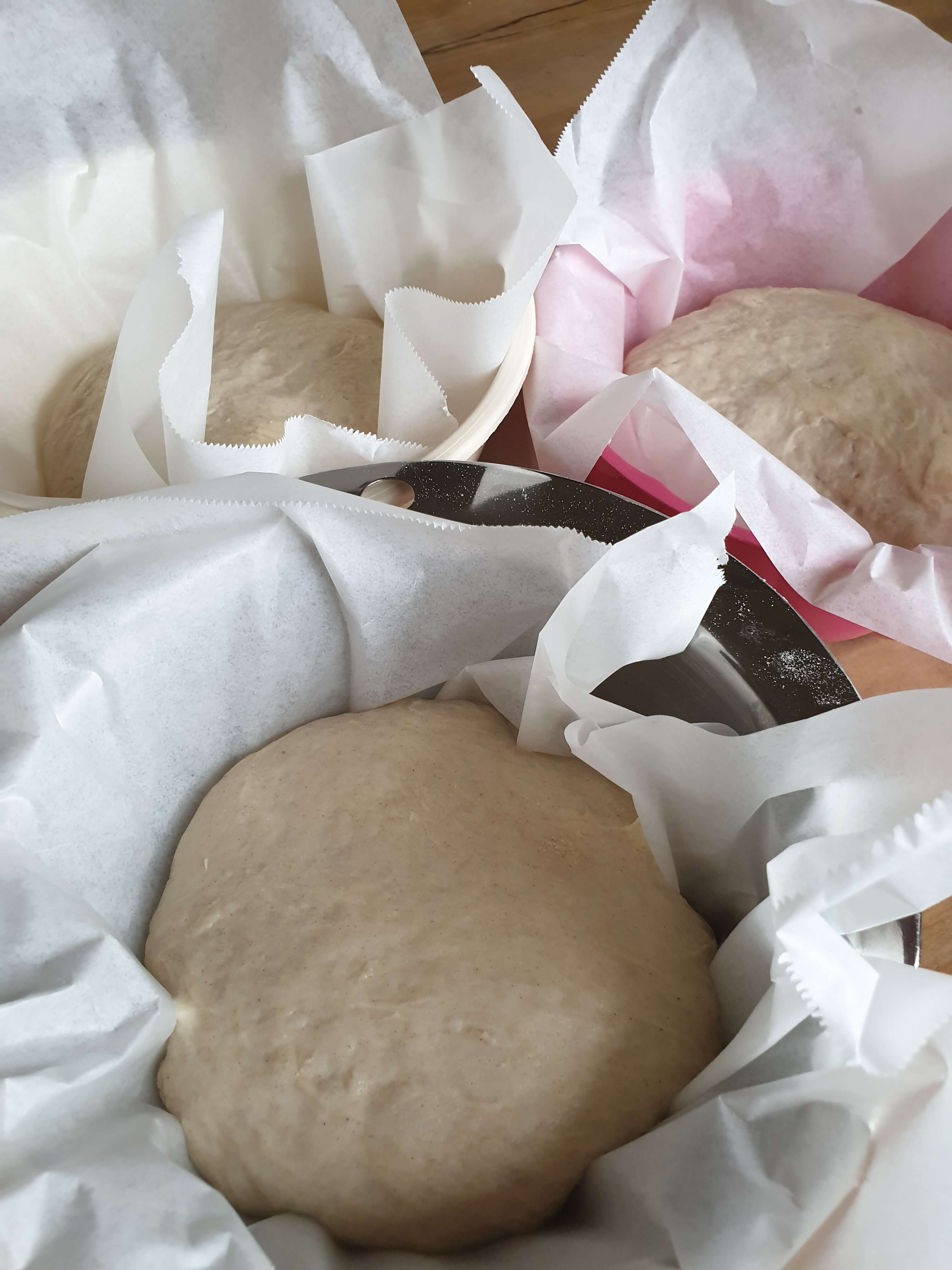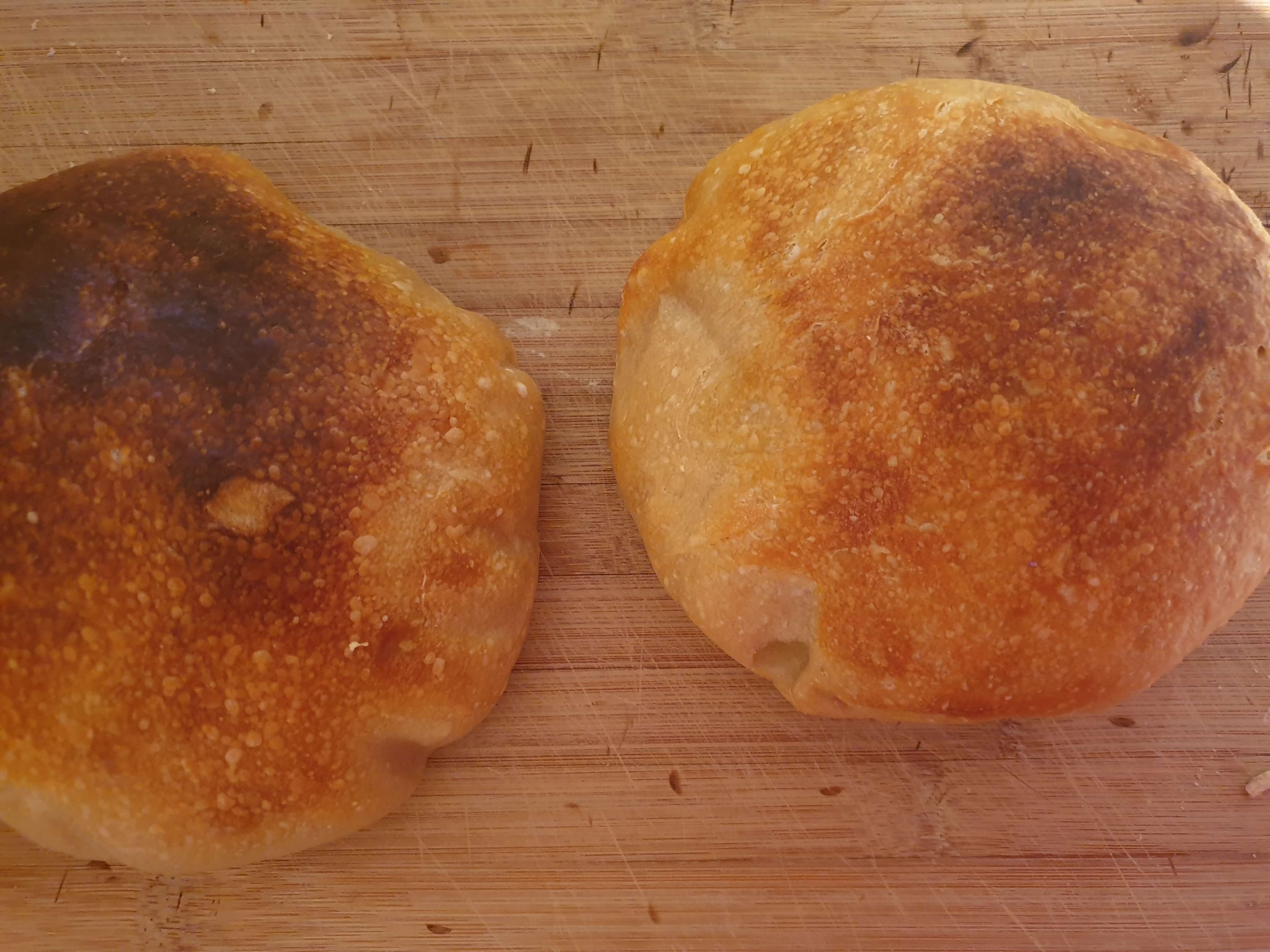A slice of sourdough stacks up very nicely against conventional white bread in terms of protein, vitamin and mineral content, as well as the presence of prebiotics. While everything should be enjoyed in moderation, this is certainly a bread you can feel good about eating.

Vitamin and Mineral-Rich.
Sourdough is a great source of several minerals such as iron and selenium. Iron is an essential part of red blood cell production and energy metabolism, and selenium helps protect our immune system, cells, and tissue. Sourdough is also a great source of many B vitamins, which assist in proper nervous system function and help regulate our metabolisms.
Prebiotics & Probiotic-like Benefits.
Prebiotics are a type of indigestible fiber that keep your gut healthy by feeding the good bacteria, called probiotics, that live there. The presence of prebiotics in sourdough is thought to make it easier to digest than many other breads and the presence of probiotic cultures have shown to increase vitamin and mineral absorption. The probiotics themselves don’t survive the baking process, but the lactic acid bacteria produced during fermentation remains and provides the benefits. The presence of lactic acid bacteria in sourdough has shown to also contain antioxidant benefits, safeguarding your body against illness.

Protein Source.
One slice of sourdough has more protein than an egg, making it a sneaky way to increase your protein intake. The high protein content can be partially attributed to the tedious sourdough preparation process. All the resting and folding involved in preparing the dough for baking helps to activate its gluten content.
Recipe for Sour Dough.
Makes 4 750g Loaves.
Ingredients.
- 6 cups High grade Flour
- cups Chlorinated free water
- 2 tsp non-iodised salt
- 1 sachet of Sourdough Culture

Equipment.
- 4 small bowls
- 2 Large bowls
- 1 or more ceramic 2L casserole dish
- Dough Blade
- Measuring jug
Method.
- In a bowl mix together the dry ingredients.
- Make a well and pour in the water.
- Using the dough blade fold water and flour together till just mixed.
- Split in ½ and put each into a floured bowl.
- Leave to rest under a moist tea towel for at least 20 hours, the longer you leave it up to 48 hours will increase the sour flavour.
- Line 4 bowls with baking paper and split each dough in ½ again, place each ¼ into each lined small bowl.
- Leave to rest for a further 2 hours
- Heat oven and casserole dish to 230 degrees.
- Bake each dough with baking paper and the lid on for 20 minutes, remove lid and bake for a further 12 minutes or until golden brown.
- Let cool on rack for at least 1 hour before cutting. Here’s the nutritional breakdown for one medium slice (64g) of sourdough bread: Calories: 170; Fat: 1.5g; Saturated Fat: 0g; Carbohydrates: 33g; Sodium: 390mg; Fiber: 1g; Sugar: 3g; Added Sugars: 0g; Protein: 7g; Calcium: 2%; Potassium: 2% DV; Iron: 15% DV


